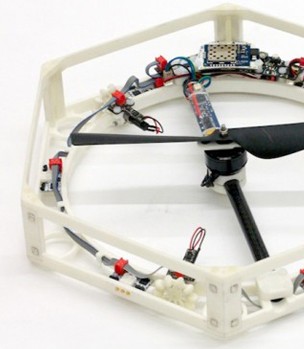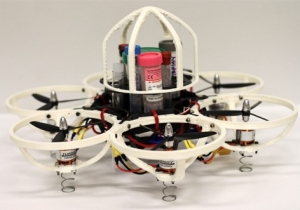Spy Drone Printed At Sea

By Justin Kovach
Imagine being out at sea, thousands of miles away from your country and needing a spy drone to carry out a covert opt, but you’re all out of drones. Not too long ago, you would’ve had to wait for a supply plane or ship to bring you what you needed. Not anymore.
Thanks to 3D printing, a British military warship recently printed a spy drone named SULSA on board their vessel and successfully test flew it to a beach a quarter of a mile away. Drones are unmanned vehicles that can be controlled remotely from a great distance. Control of one is somewhat like controlling a plane in a video game, though slightly more complex. Drones have become a dominant force in the US Military and many militaries around the world because they enable the military to gather intelligence or conduct other missions without risking human life.
Since drones are becoming evermore crucial to carrying out military operations, the need for more specialized drones has increased. By using 3D printing technology, militaries around the world will be able to print customizable drones whenever the need arises. It took only 48 hours from start to finish for the SULSA to be operational. SULSA’s wingspan measures at four feet long and has a top speed of 60 miles an hour.
How Did They Do It?
SULSA was printed using selective laser sintering (SLS). SLS is a process that sinters (binds) a specific type of material together into a three-dimensional structure. Nylon was the material in this case. Other materials that can be sintered include polystyrene and metals. To visualize it, think about melting candle wax; as the wax melts it hardens on top of the wax below creating structure. Sintering is like that, only it binds the materials in any direction the printer tells it to go by using lasers.

The challenge for engineers for SULSA was to create a snap together drone that could be assembled in minutes. They printed SULSA out of just four snap together parts, and no screws or bolts were needed.
To print anything on a 3D printer, you need to upload the file that has the desired item into the printer software. Then the 3D printer goes to work, building layer upon layer until the object is complete. You could actually upload a schematic of the avatar from your favorite video game into a 3D printer, and the 3D printer could print out a replica of your own personal video game action figure! That beats just printing a picture of your avatar on a piece of paper any day.
For the Navy, this can literally be a lifesaving technology. They could print surveillance drones to watch dangerous areas or spy drones to fly silently into enemy land and gather intelligence. Or even supply drones that could fly small payloads to soldiers caught behind enemy lines. SULSA is only the beginning, and it’s already flying high with potential!
Extension Questions
- What is the difference between 3D printing and standard 2D paper printing?
- What other items could the Navy or anyone else print using a 3D printer?